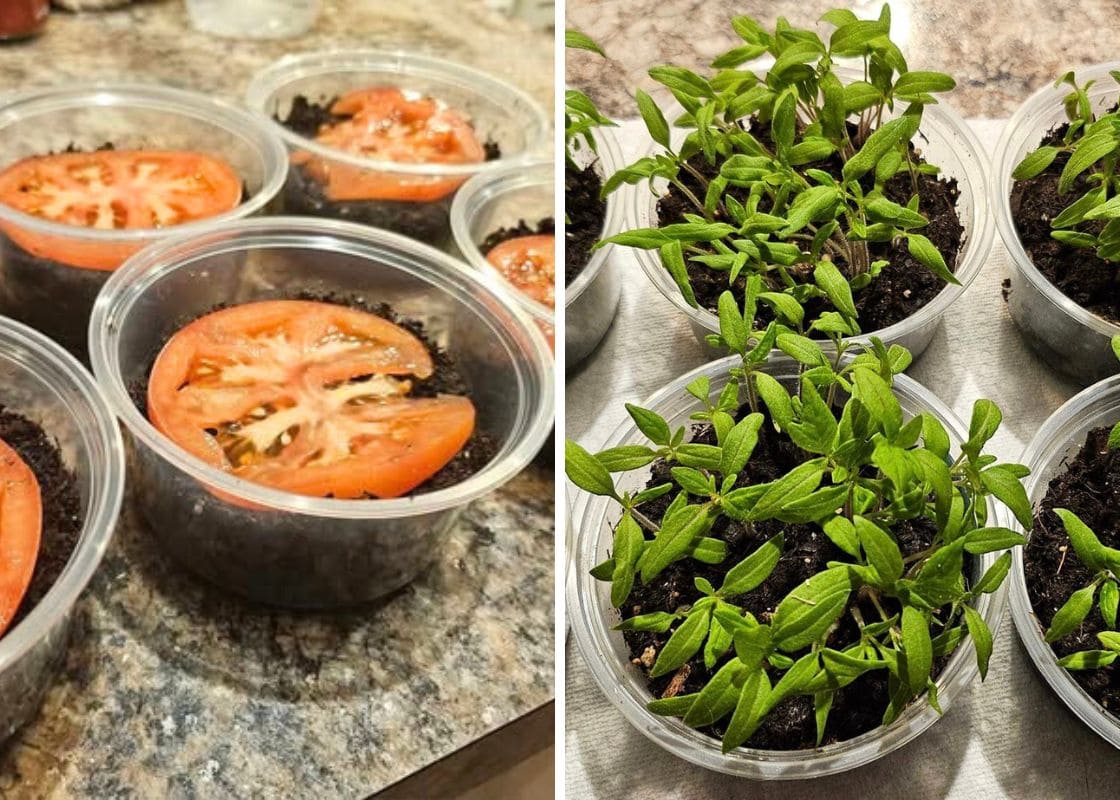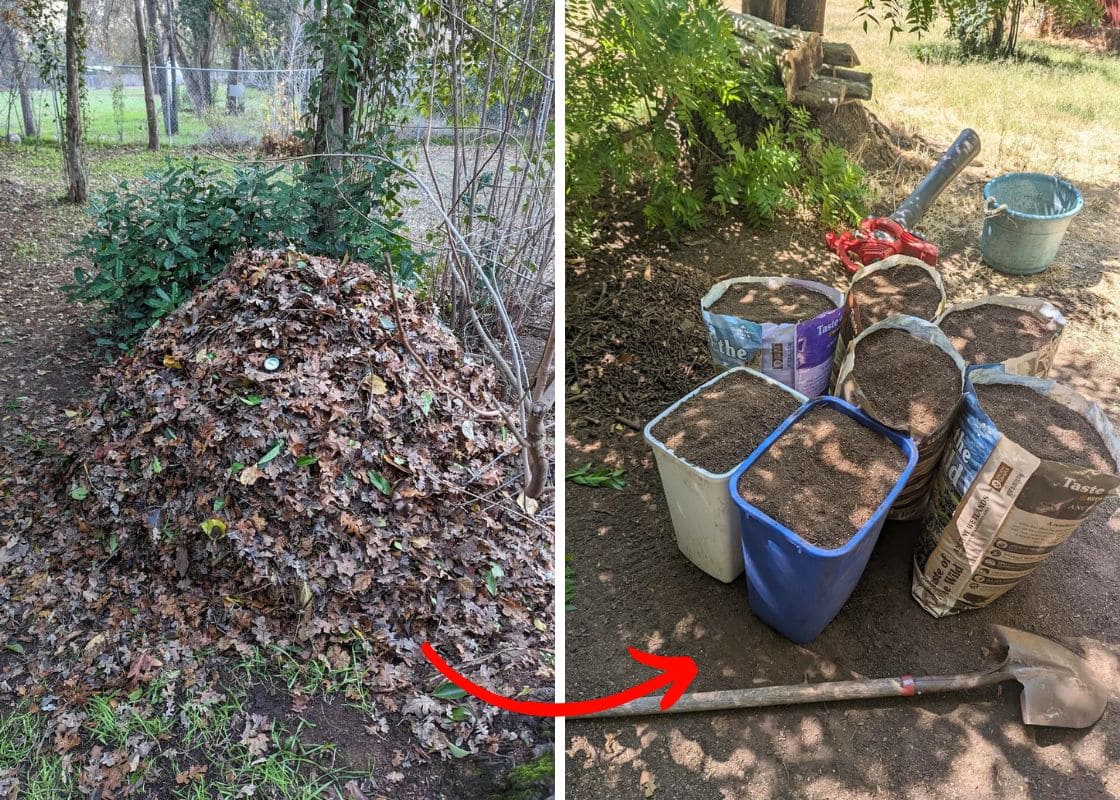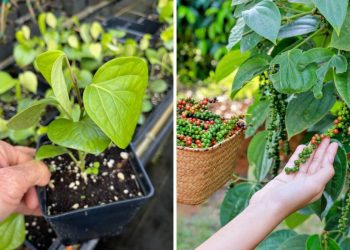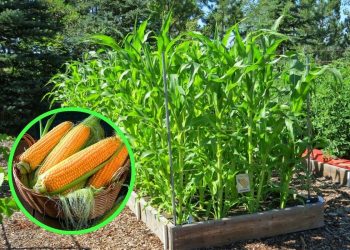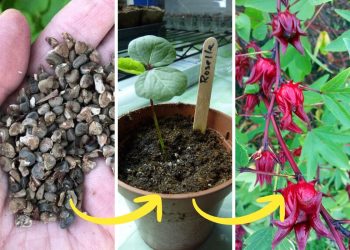Do you know that 100 gram luffa provides 410 IU of vitamin A? This member of the Cucurbitaceae family owns large, lobed leaves and bright yellow, bell-shaped flowers.
Apart from vitamin A, it boasts vitamins C and B-complex, along with calcium, magnesium, and potassium. Young and tender luffa is delicious in stir-fries, soups, and salads.
This nutritious plant helps protect cells from oxidative stress, reduces the risk of chronic diseases, and mitigates inflammation, potentially benefiting conditions like arthritis.
Additionally, mature Luffa is popular in crafts; when dried, it transforms into a natural bath Loofah sponge or kitchen scrubber, reducing plastic pollution and waste.
Summary:
- Luffa, also known as sponge gourd, is a versatile plant valued for both its edible young fruits and fibrous mature sponges.
- Start luffa seeds indoors 6-8 weeks before the last frost, providing a warm environment for germination.
- Ensure your vines have sturdy support and use a balanced fertilizer. Use insecticidal soap or neem oil to manage pests, and ensure good air circulation to prevent diseases.
| Scientific name | Luffa |
| Common name | Sponge gourd, Loofah |
| Plant type | Vine |
| Height | Up to 9 meters |
| Leaves | Large, lobed, and green |
| Flowers | Yellow, unisexual |
| Fruit | Cylindrical or ribbed, fibrous when mature |
| Seeds | Black or brown, flat |
| Soil requirements | Well-drained, fertile soil, pH 6.0-7.5 |
| Climate | Warm, humid climate |
Propagation
Propagation of luffa plants is quite easy as they don’t cross-pollinate. When you harvest the seeds from the dried fruit, keep them in a cool, dry place.
Start sowing the seeds indoors from late winter to early spring. I usually use small pots filled with moist seed compost.
Maintaining a temperature of 20-24°C is crucial for reliable germination. I’ve found that using a heated propagator can help achieve consistent temperatures.
Once the seedlings are about 2-3 inches tall, transplant them into individual pots. However, make sure all risk of frost has passed before moving them to outdoors.
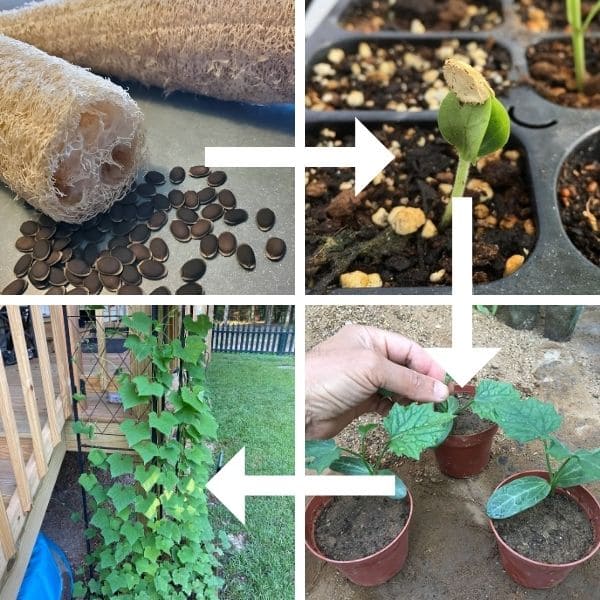
Growing Luffa
1. Preparation
Besides looking for black, mature luffa seeds, you need to know that there are 3 types of luffa currently:
- Luffa aegyptiaca: Also known as Egyptian or smooth luffa, this variety has smooth, cylindrical fruits. Young fruits are edible, while mature ones are used as natural sponges.
- Luffa acutangula: Known as ridged or angled luffa, this type has prominently ridged fruits. It’s popular in Asian cuisines for its young fruits, and the mature ones are used for sponges.
- Luffa operculata: Called wild luffa or sponge gourd, this type is used mainly for medicinal purposes and as a source of natural sponges.
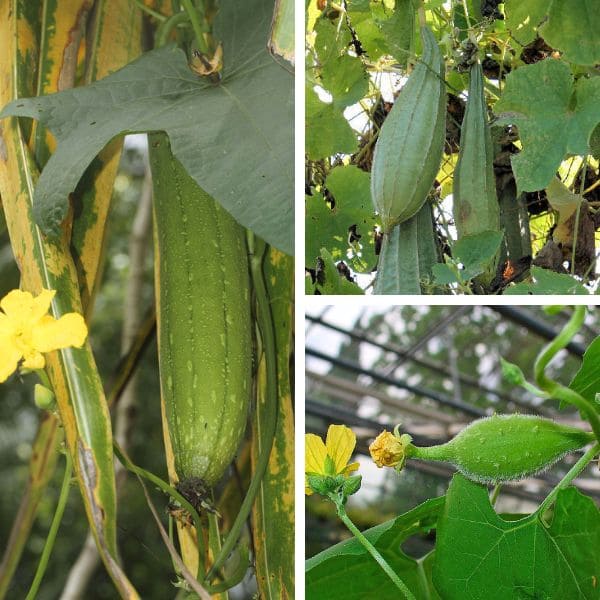
To ensure your luffa thrives, prepare rich, fertile soil with good drainage. I find that maintaining a soil pH between 6 to 6.8 is ideal.
Luffa plants can grow up to 3 meters tall, so providing a large, sturdy support, such as a trellis or strong, galvanized wires, is crucial.
2. How to Grow Luffa
In cooler zones, you should begin planting luffa about 6-8 weeks before the last frost date.
I always use fresh luffa seeds, soaking them in water for 24 hours before planting. Then I plant them in 4-inch pots filled with moistened soil, about ½ inch deep.
Cover the pots with plastic wrap or a humidity dome to create a warm, humid environment. Once the seeds sprout, I remove the cover to allow for proper air circulation.
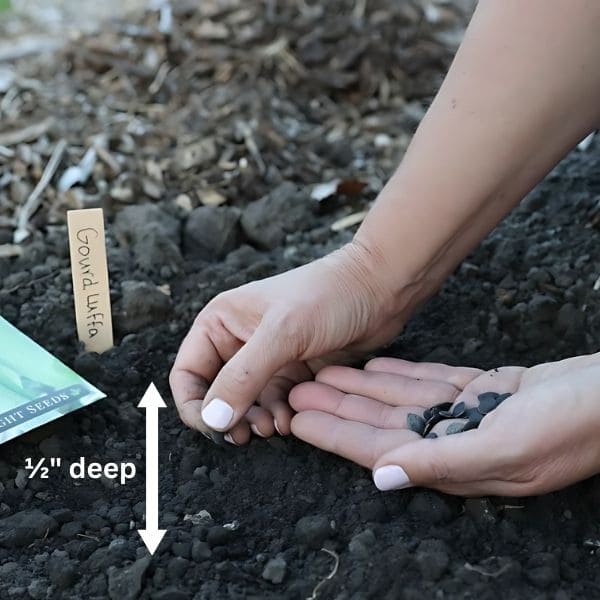
When the weather consistently warms up to around 70°F (21°C), it’s time to transplant the seedlings into the garden. Plant the Luffa at the base of the trellis prepared.
Regular watering is crucial, and I always mulch the soil well to retain moisture and keep weeds at bay.
One useful tip is that you can plant them with marigolds or nasturtiums nearby to repel pests and attract beneficial insects.
Luffa plants start bearing fruit about 4 months after sowing the seeds and will be ready for harvest 6-7 months later.
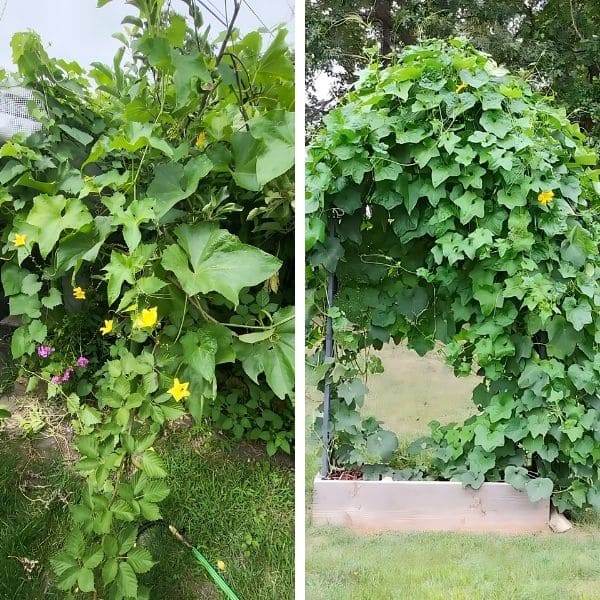
Care for Luffa
Light
Luffa vines thrive in full sun about 6-8 hours of direct sunlight each day, even in hot climates. With plenty of sunlight they can grow robustly and produce healthy fruits.
However, if full sun isn’t possible, Luffa can tolerate partial shade, though this might result in slightly less vigorous growth.
Water
You need to keep the soil consistently moist, aiming for about 1 inch of water per week.
I find that watering deeply in the early morning or late afternoon is best, as it allows the water to penetrate the soil without evaporating too quickly.
Always water at the root level to prevent fungal growth on the leaves and fruit. Overwatering can lead to root rot, so it’s essential to strike a balance.
Fertilizer
At transplanting, you should use a balanced fertilizer with an NPK ratio of 10-10-10 at half the recommended rate.
As the vines grow, switch to a higher nitrogen fertilizer, like 20-10-10, to support leaf and vine development. Fertilize again when plants are about a foot tall.
During the blooming stage, return to a balanced fertilizer when the first flowers appear. Remember to avoid over-fertilizing and water thoroughly after each fertilization to distribute nutrients evenly.
Pruning
About two months before the first frost date, pinch away all the flowers and any small luffa on the vine.
You need to use clean, sharp pruning shears or simply pinch off the flowers and tiny fruits with your fingers.
Cut at a slight angle close to the main stem to prevent water from sitting on the cut surface and reduce the risk of disease.
Pests and Diseases
Aphids suck the sap from the luffa plants, causing leaves to curl and yellow while cucumber beetles and squash bugs can chew on the leaves and stems, weakening the plants.
To combat these, you should apply insecticidal soap or neem oil in the morning or late in the evening to avoid harming beneficial insects and be environmentally friendly.
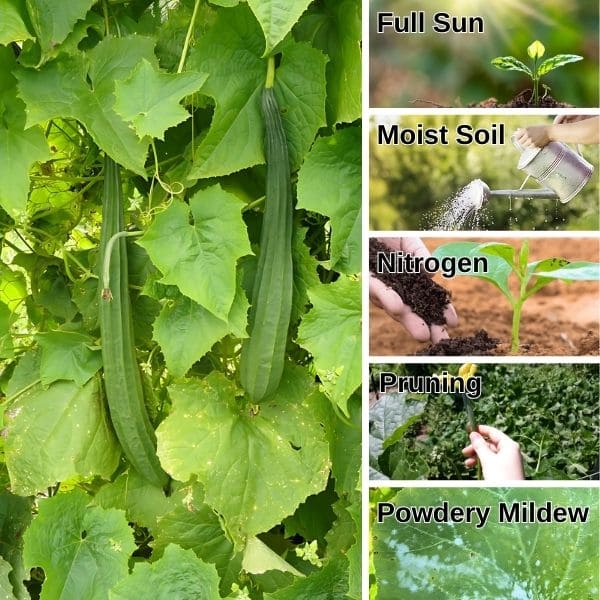
Additionally, powdery mildew appears as a white, powdery coating on leaves, while downy mildew causes yellow patches with fuzzy growth underneath.
To prevent these diseases, ensure good air circulation by spacing them well and pruning excess foliage and avoid overhead watering; instead, water at the base of the plants.
Common Problems
Yellow Leaves
Yellow leaves on luffa plants come from nutrient deficiency, particularly nitrogen. Inadequate watering or poor drainage can also lead to yellowing.
To address this, ensure your plants receive a balanced fertilizer and maintain consistent watering practices.
Not Setting Fruit
This can be due to poor pollination, often caused by a lack of pollinators like bees. Hand-pollination can be an effective solution.
Additionally, extreme temperatures and nutrient imbalances can also affect fruit set. Ensure your plants are well-fed and protected from temperature extremes.
Cold Sensitivity
Transplant them outdoors only after the risk of frost has passed and temperatures are consistently around 70°F (21°C). If a cold snap is forecasted, protect your plants with vented covers.
Harvest and Preservation
Culinary Uses
From mid-summer onwards, luffa flower buds, flowers, and small green fruits are perfect for picking.
These tender offerings resemble the flavors of summer squash and can be enjoyed raw in salads, sautéed lightly in oil, sliced into stir-fries, added to soups, stews, or curries.
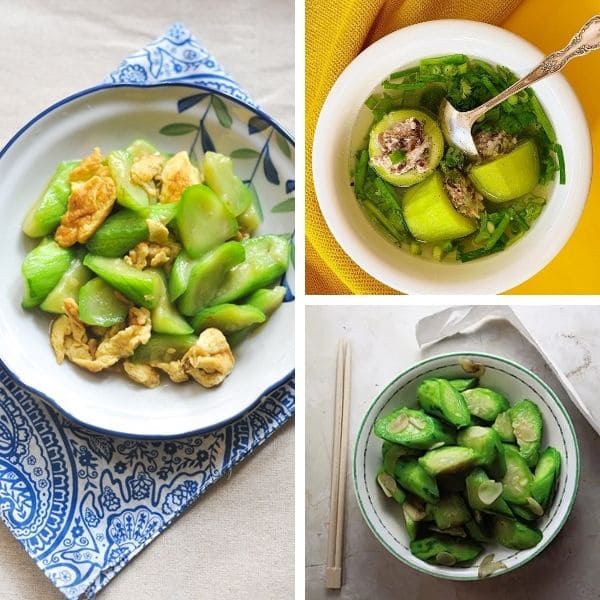
Luffa Sponges
To yield large, robust luffa sponges, allow the first fruits to mature fully on the vine. Mature luffa gourds typically reach lengths of about 2 feet and diameters of 7 inches.
Let the fruits ripen and dry on the vine until their skins turn dry and brown. Once harvested, rinse and remove seeds from the fibrous interior.
Soak the sponges in a mild bleach solution to lighten their color and remove any remaining debris. Finally, air dry the sponges completely before use or storage.
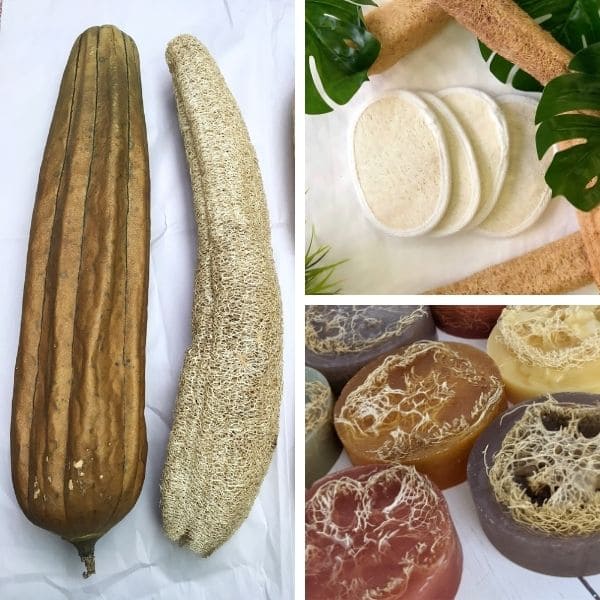
FAQs
Can Luffa be grown in containers?
Yes, luffa can be grown in large containers with proper support for the vines. Ensure the container has good drainage and use rich, fertile soil to support healthy growth.
How many Luffahs grow per plant?
On average, a healthy Luffa plant can produce between 10 to 40 fruits per vine, depending on growing conditions and care.
How deep do Luffa roots go?
Luffa roots typically grow about 18 inches deep, so ensure your soil is well-prepared and deep enough to accommodate this.
What can you not plant next to Luffa?
Avoid planting luffa near other cucurbits like pumpkins and melons. Planting them too close can lead to increased pest problems and nutrient deficiencies.


